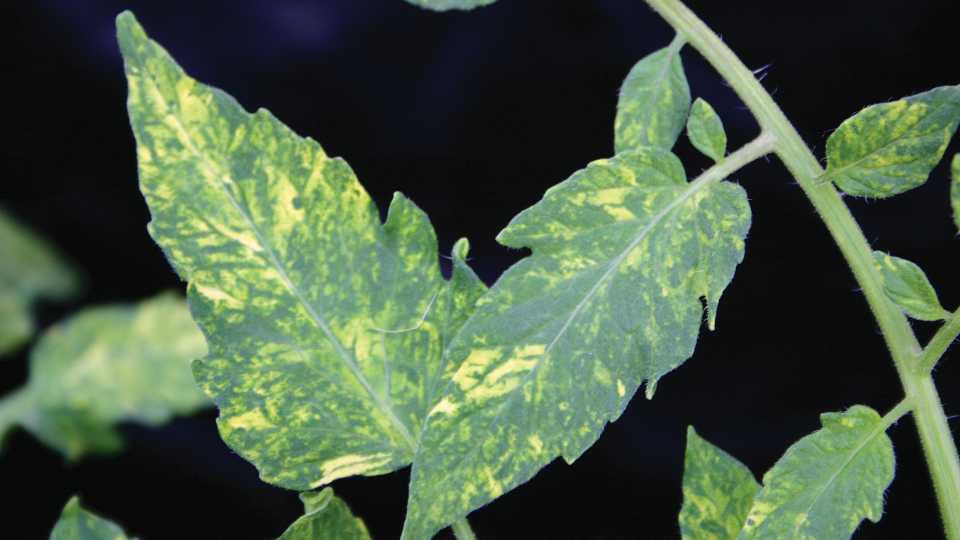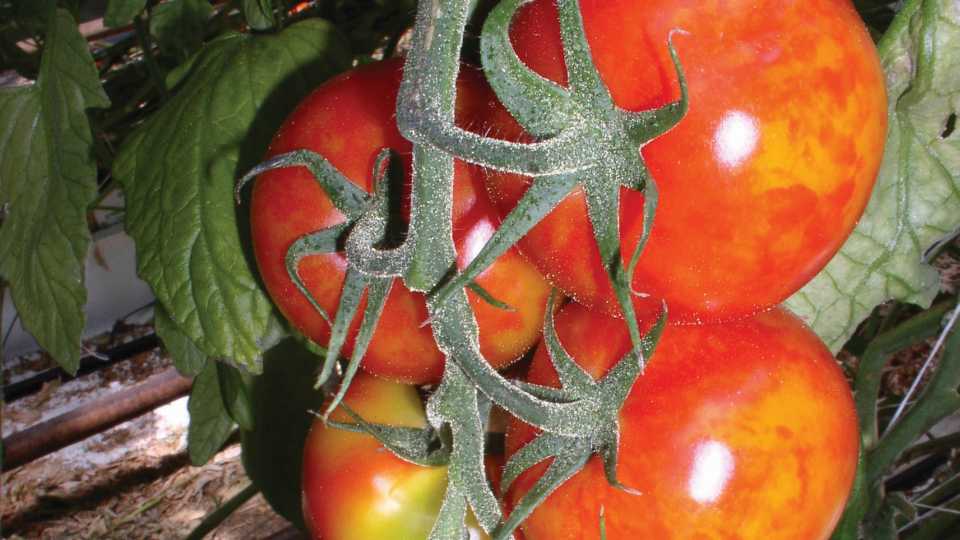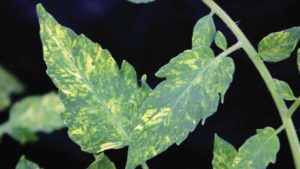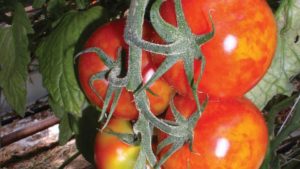Protect Your Veggie Crops From Pepino Mosaic Virus
Pepino mosaic virus (PepMV) was first discovered in Peru in the 1970s infecting an indigenous crop known as pepino (Solanum muricatum). It has since emerged as a problem in greenhouse tomatoes in Europe, Mexico, and Canada. In addition to tomato, PepMV can infect other crops including potatoes, cucumbers, and tobacco.
Identification
Symptoms usually appear two to three weeks after infection and tend to spread along the row. Affected plants often show stunting of the growing point or damage resembling hormonal herbicide damage. Leaves in the upper canopy may show dark spots, while lower leaves may display brown, necrotic lesions. Other leaf symptoms include a yellow spot or spots that later develop into bright yellow patches on the leaf. Stems may have brown streaks that encircle the entire stem close to the growing point, as well as the stems of the flowering clusters, causing developing flowers to abort. The calyx of developing fruits can also appear brown. Fruit symptoms include uneven ripening and ‘marbling,’ which impacts fruit quality.
In some cases, infected leaves and fruits may not show any symptoms. In addition, symptoms may be observed on a few fruit clusters or leaves, and then not appear subsequently. Symptoms may vary between tomato varieties, and there has been no correlation established between variety and susceptibility to the virus.
Symptoms are more readily seen during cooler months when light levels and temperatures are lower. During the spring and summer, older plants may harbor the virus but not show any symptoms.
Survival and Spread
Pepino mosaic virus is a very contagious disease easily spread mechanically via contaminated tools, shoes, clothing, hands, and plant-to-plant contact. Workers can transmit the virus simply by brushing against affected plants. The virus may remain viable in dry plant material for as long as three months. Clothing worn in an infected crop may remain infectious for at least 14 days.
For spread over longer distances, several possibilities exist and include the sap of infected fruits and contaminated seed. PepMV often occurs in mixed infections with tomato brown rugose fruit virus (ToBRFV).
To-date, PepMV has not been observed in Florida, but is of concern as it has a global track record and has recently been detected in imported greenhouse tomatoes sold in Florida supermarkets.
Management Methods
In tomato, control is best achieved by excluding the virus from crops. To achieve this, thorough hygiene and careful management is essential. Ensuring that growing and packing areas are kept separate is vital.
Infections caused by contamination originating from infected fruit being handled in packinghouses, is one of the main causes of new outbreaks. Once a tomato crop becomes infected, controlling the virus is difficult, due to the ease and speed that it spreads by contact. Final infection incidences of 90% to 100% are common. After harvest of infected crops, thorough clean-up operations using disinfectants are required to prevent reinfection of subsequent crops. A range of disinfectants are effective and should be used to decontaminate equipment and surfaces.


















